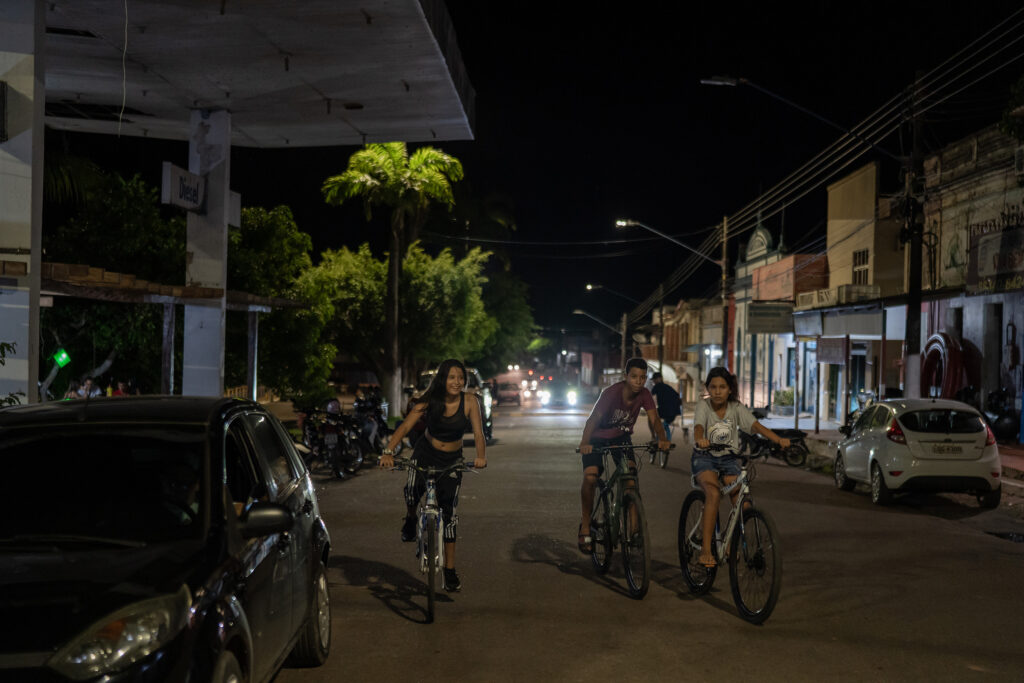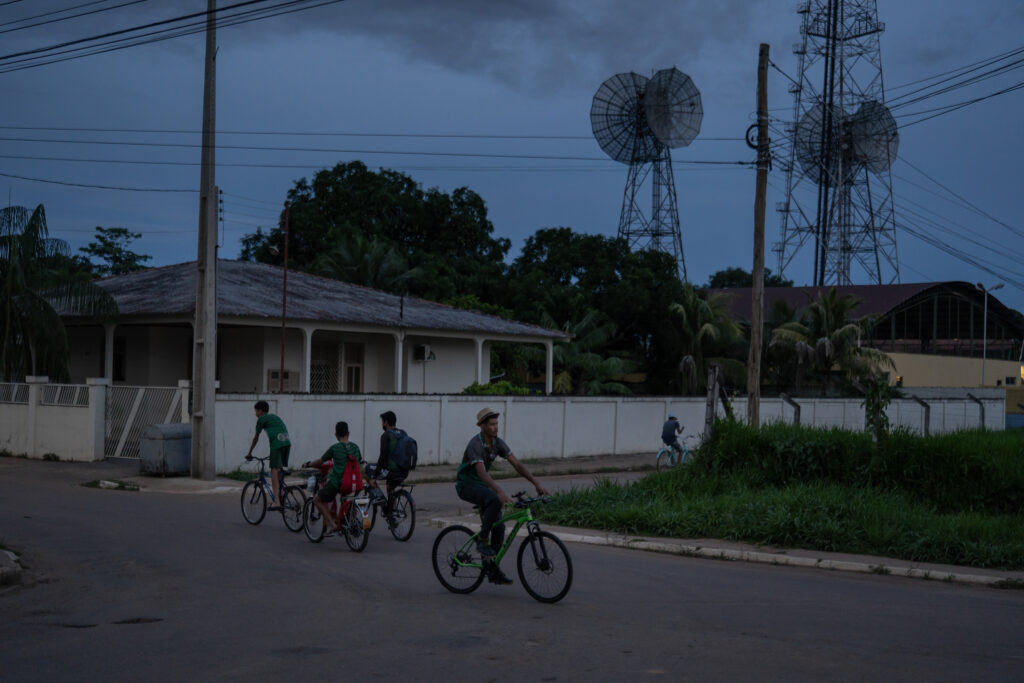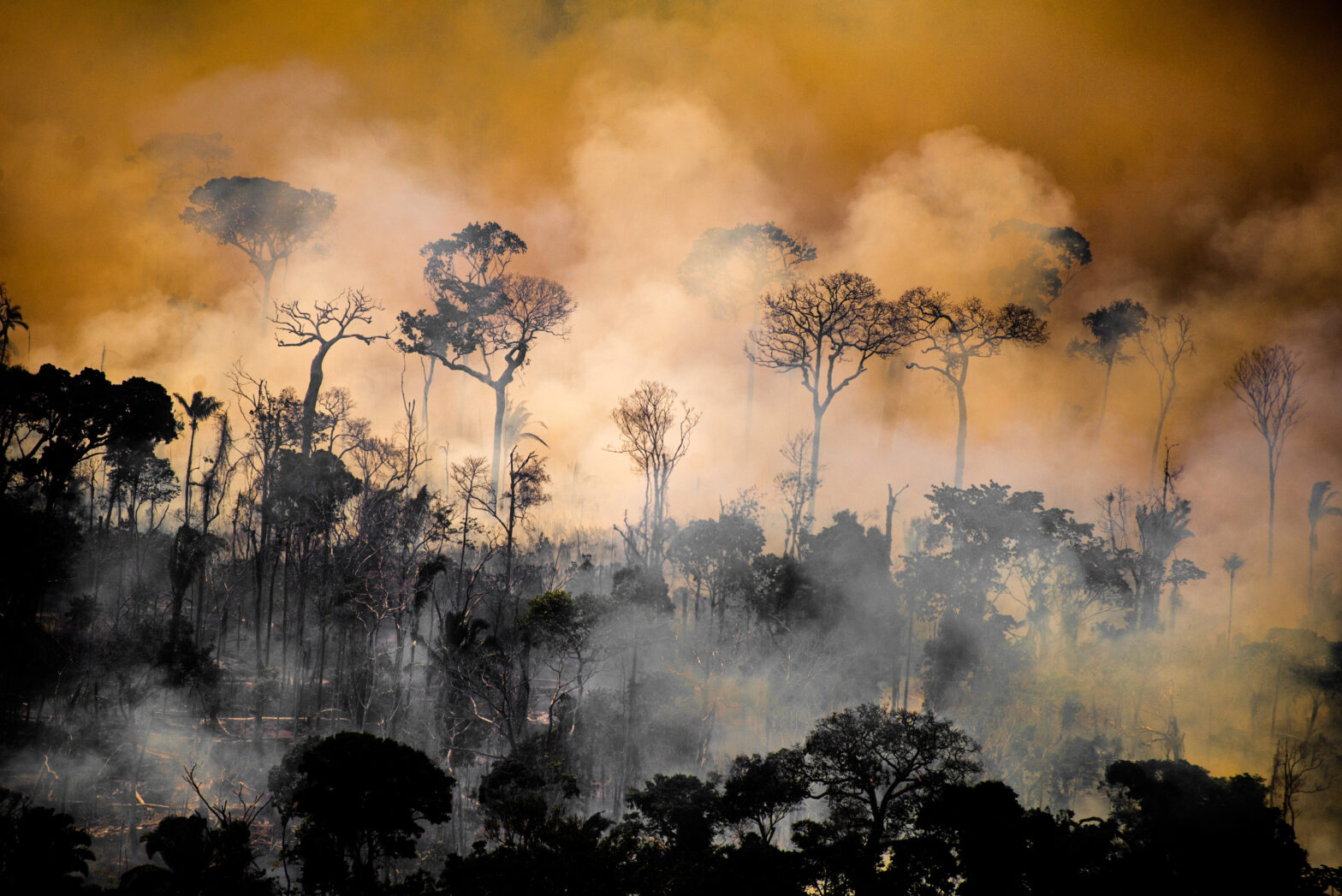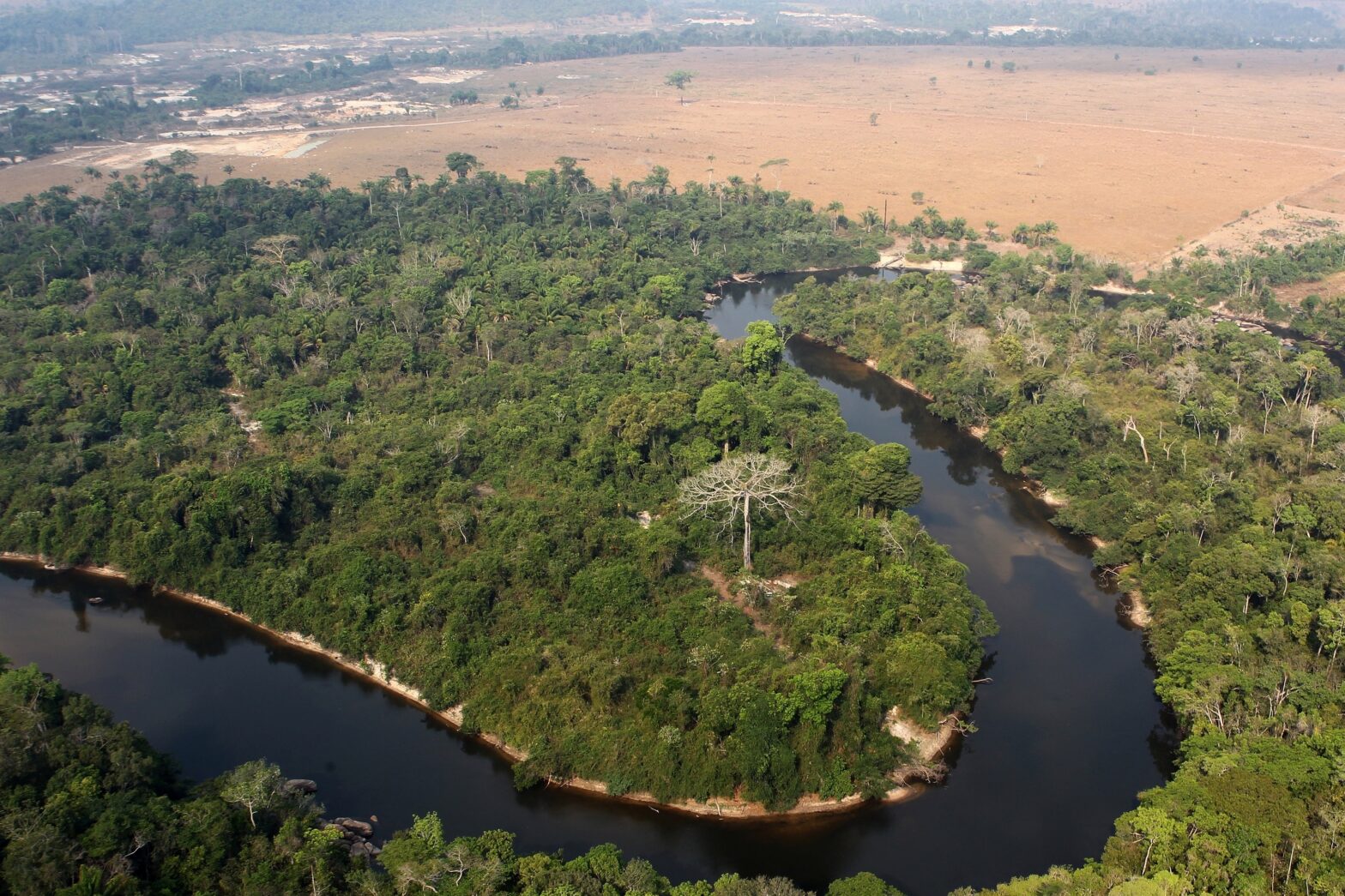In Humaitá, a town located on the banks of the Madeira River and on the crossroads of two Amazonian major highways, a local infrastructure project is touted to bring growth and progress. But it fuels fears of deforestation as the agricultural frontier advances.
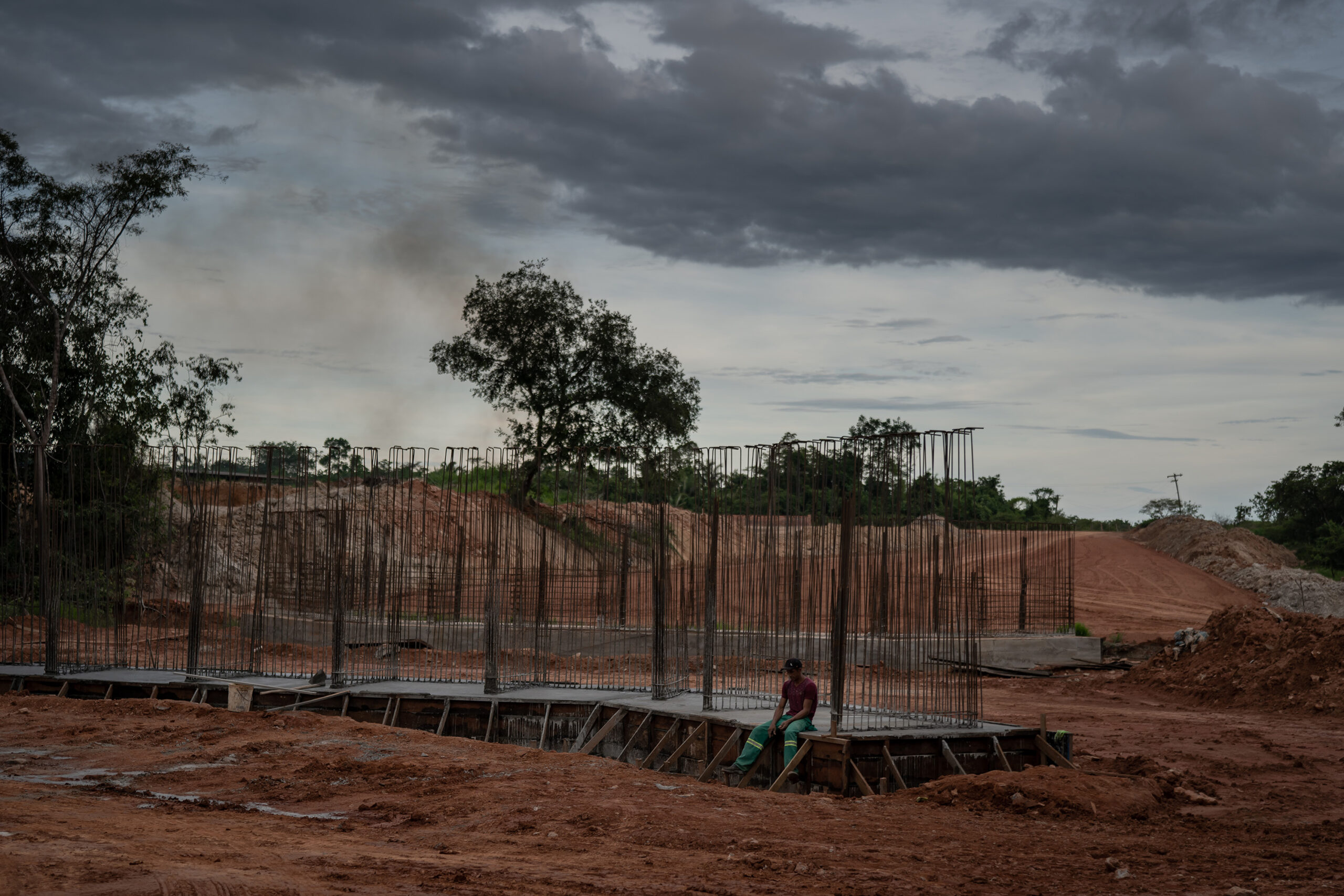
View of the construction site of the Humaitá ring road, with the objective of avoiding heavy truck traffic in the center of the city and facilitating access to the port on the banks of the Madeira River. Credit: Avener Prado.
A young employee sits alone on a construction site on the quiet dirt back roads of Humaitá, a municipality of 56,000 people in the south of Brazil’s Amazonas state. All is silent, except for the sounds of local wildlife.
But soon, when the red earth is paved with concrete, these roads will rumble with trucks carrying soybeans – the vast majority planted and grown in other states – to the city’s recently built, high-tech grain port.
This will be our mark of progress. It will be a different region after
Luiz Schmidt, director of the local commerce association.
The Humaitá “Soy Belt” will integrate Humaitá, a city that has been plagued by illegal deforestation, to the Amazon’s booming river-based logistics corridor, which already moves a fifth of Brazil’s soy exports. From the new port, local experts say, cargoes will be sent down the Madeira and the Amazon rivers before heading abroad, mostly to China and Europe.
Most of the soy to be loaded in Humaitá will come from Rondônia, a state that has historically been associated with beef and timber production – as well as illegal deforestation, fires and land conflicts.
But data from the Brazilian Institute of Geography and Statistics (IBGE) shows that in the last ten years, Rondônia – which neighbours Mato Grosso, the heart of Brazil’s soy industry – almost tripled the land space it uses to plant soybeans. Local producers expect 2021’s production to hit 420,000 hectares.
That’s still a tiny amount in comparison to soy super state Mato Grosso, which planted 9.2 million hectares in 2019, but Rondônia’s production already dwarfs that of neighbouring Amazon states Amazonas and Acre, highlighting the advance of the soy frontier.
In 2020, according to Brazil’s ComexStat export data, six countries – Holland, Spain, Turkey, Mexico, United Kingdom and China – accounted for 80% of Rondônia’s soy exports. Today, two thirds of Rondônia’s municipalities are producing soy.
Brazil’s Soy Moratorium, an increasingly unpopular agreement among many rural producers but one that environmentalists believe has so far protected the Amazon forest, blocks soy purchases by multinational companies from lands deforested after 2008.
This means in practice that producers merely plant on lands that were already opened – for cattle pasture, for example – before the 2008 deadline, instead of deforesting new areas.
According to the Moratorium’s latest report, less than 2% of the total soy area for the 2018-19 crop year in the Amazon Biome corresponded as “non-compliant”. But according to Cristiane Mazzetti, a Greenpeace forest campaigner, it’s common that soy crops in Amazon states are planted in biomes not covered by the Moratorium, such as the Cerrado savannah. Mazzetti also said that Rondônia lacks transparency about the properties on which soy crops are planted, making accountability harder.
Overall, according to the Brazilian Vegetable Oil Industries Association (Abiove), the amount of soy grown in “non-compliant” areas grew by 23% in 2019-2020. As an overall share, Rondônia’s “non-compliant” soy area grew the most, with 4,500 hectares for the season – an increase of 54% in comparison with the previous period, but little more than 1% of the state’s total production.
Still, the expansion of soy, one of Brazil’s most profitable commodities, tends to displace the typically less productive cattle farms, says Ricardo Gilson da Costa Silva, a geographer at the Federal University of Rondônia.
“Soy is a commodity linked to the external market that demands increasing amounts of land,” he said.
This, in turn, pushes illegal timber, cattle rearing and land speculation markets to farther-flung rural areas, increasing pressure on indigenous reserves and protected areas, he says.
It’s a process he dubs Rondônia-isation: unregulated development, deforestation, growth of cities and eventual displacement of small farms in favour of big producers.
Recently, Rondônia’s legislative assembly passed a bill drastically reducing the size of two forest conservation units – by a total of 200,000 hectares – that had been illegal overrun by large-scale cattle farmers. Critics slammed it as “legalised land-grabbing”. The bill awaits to be sanctioned by Rondônia’s governor Coronel Marcos Rocha, a firm ally of Brazil’s far-right President Jair Bolsonaro.
Agro-industrial hub of the future
Humaitá is on the crossroads of two of the Amazon’s most important highways – the BR-319 and BR-230 “Trans-Amazonian” – and sits on the banks of the Madeira River, the second most important waterway for transporting grains and other goods in the region after the Amazon River.
The district is also flanked by protected forest areas including an indigenous reserve and conservation units designed to halt the advance of the agricultural frontier.
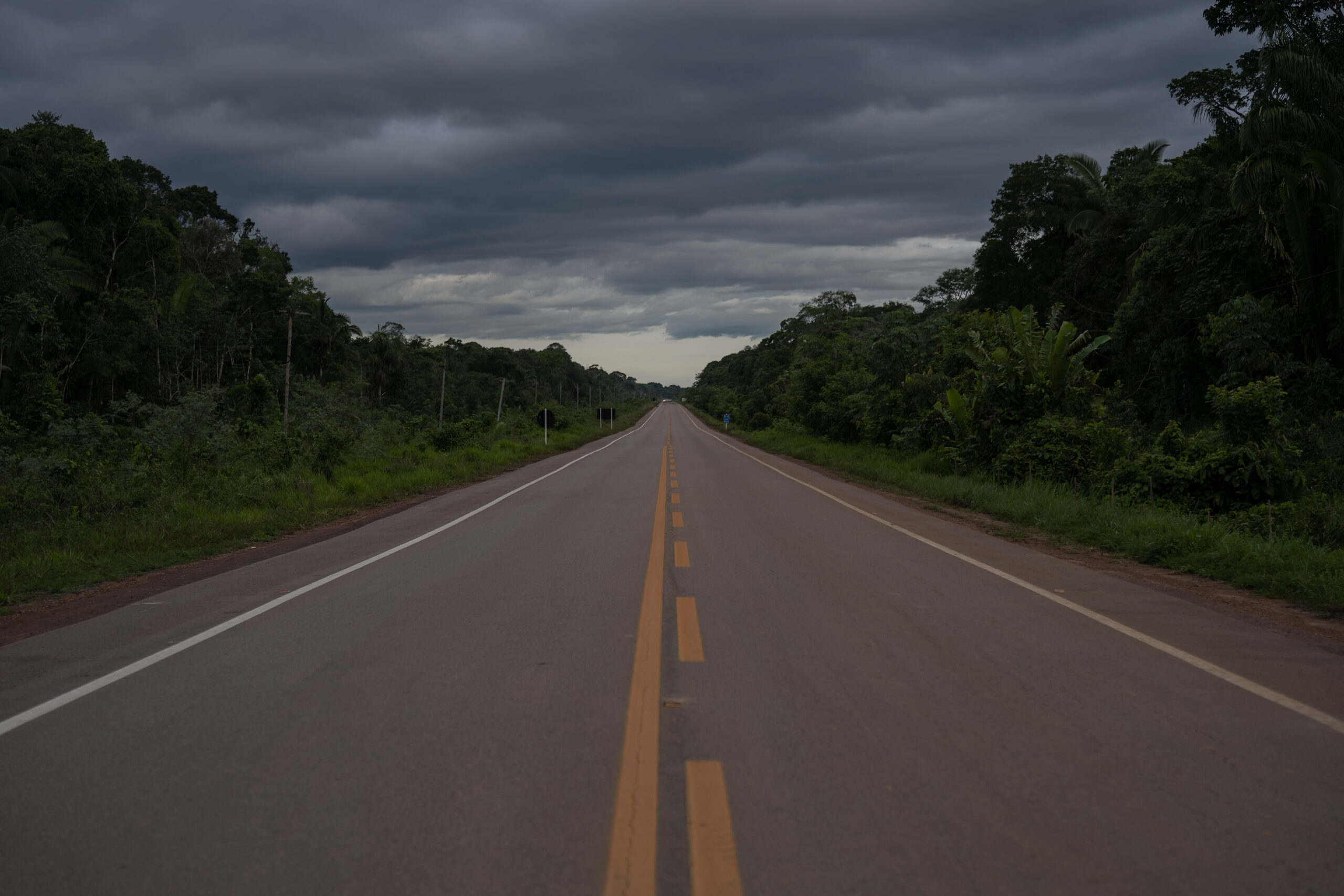
Built by the state government at a cost of BR$46.5million (US$8.6million) and due to be completed by December 2021, the “Soy Belt” is a ring road system that will allow trucks carrying soybeans to bypass the centre of the city.
Local experts say the advantage is clear: a barge carrying soy, grains or other goods from one of the river ports in Porto Velho, Rondônia’s capital, takes on average 36 hours to reach Humaitá due to a bottleneck in the river. What’s more, they say, during the dry season when the river is shallower, barges can only operate with half the cargo and accidents are common.
But a truck driver can make the same journey via road in just three hours to unload grains which from there are taken down the Madeira River to the Itacoatiara or Santarém ports, local experts say. From there they are sent abroad across the Atlantic Ocean.
Local landowners and business leaders are optimistic that the “Soy Belt” will enable local agricultural exports and drive up land prices. And with the flow of truckers, the city will need more hotels, gas stations, pharmacies and supermarkets, creating hundreds of jobs, they claim.
“Humaitá will be a great business centre of Amazonas state,” says Luiz Schmidt, director of the local commerce association. Schmidt owns 10,000 hectares of land in the region, where he raises cattle and plants crops. He planted soy in the past. Now, with the port ensuring good returns due to low logistics costs, he hopes to start again.

Humaitá first began planting small amounts of soy in the late 1990s. But due to high costs when international prices fell after 2006, so did local production. Production increased again in 2017, with the Santa Rita farm, located on the BR-319. The farm contains the largest soybean plantation in the state. Something of a pioneer, it has now planted 250 hectares, according to local media.
Valdenor Cardoso, president of the Amazonas state agricultural body Idam (Institute of Sustainable Agricultural and Forestry Development of the State of Amazonas), says today the municipality has 2700 hectares of soy planted, practically accounting for all of the recorded soy in Amazonas state. He expects a 50-100% increase in the coming years in areas that are already open and ready to plant.
Cardoso says that the region’s temperature combined with its rich “natural fields” (a natural grassland-forest transition area in Humaitá known as “Campos de Humaitá”) make it great for growing crops – among them soy – without the need to deforest.
With the “Soy Belt” and other infrastructure projects he said that Humaitá’s potential is “undeniable”. As a result, “both medium and large agribusiness companies” are setting up there.
“Humaitá is destined to be a great agro-industrial hub,” he said.
Even with a 100% increase in soy production, Humaitá would barely reach the 5000 hectares mark necessary for it to enter the list of municipalities monitored by the Soy Moratorium. And nor are its “natural fields” a biome monitored under the agreement.
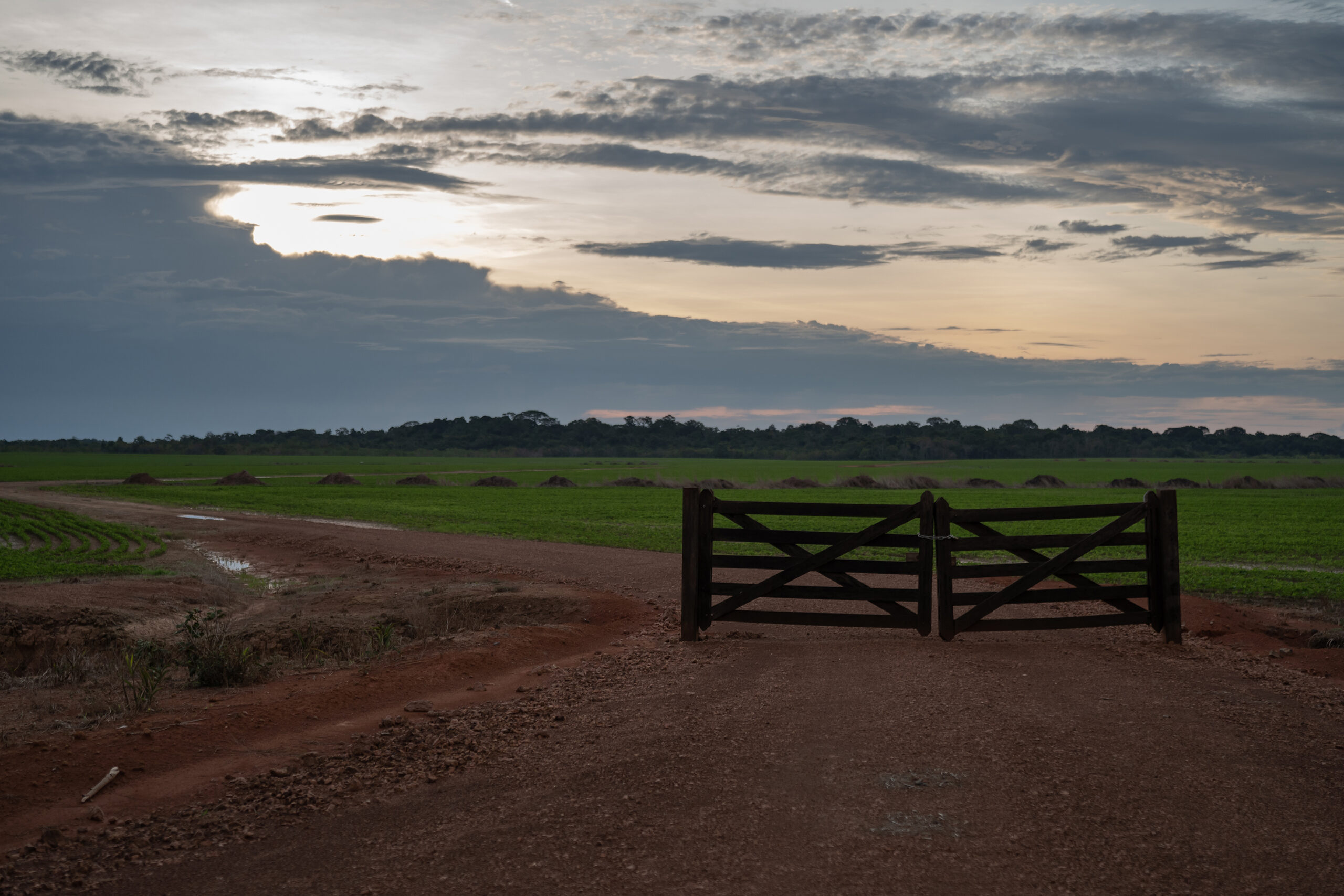
But Cristiane Mazzetti, the Greenpeace campaigner, warned that the high volume of pesticides needed for soy production could damage local soils to the point where they require increasing volumes of chemicals to produce.
“Whatever conversion of a natural environment is problematic because we are living in a climate crisis,” she said.
Rondônia’s “Southern Cone” soy capital
In 1995, Rondônia’s “Southern Cone” region was the scene of one of Brazil’s most notorious rural massacres. A rural militia of gunmen and military police attacked a group of several hundred small farmers that were squatting a rural property in the municipality of Corumbiara. At least ten people were killed, including two police officers and a nine-year-old child. Others reportedly disappeared.
Today, the “Southern Cone” which borders Mato Grosso – Brazil’s largest soy producer – accounts for the vast majority of Rondônia’s soy production. The city of Vilhena is the biggest soy producer, with 42,000 hectares planted in 2019.
Vilhena is also the base of the Masutti Group, which operates the grain port in Humaitá and is set to be the biggest beneficiary of the Soy Belt, since the public road connects to the group’s cargo port next to the Madeira River. The group moved from Paraná State, previously Brazil’s biggest soy producer in the south, to Mato Grosso and then to Rondônia. Masutti did not respond to InfoAmazonia’s requests for an interview.
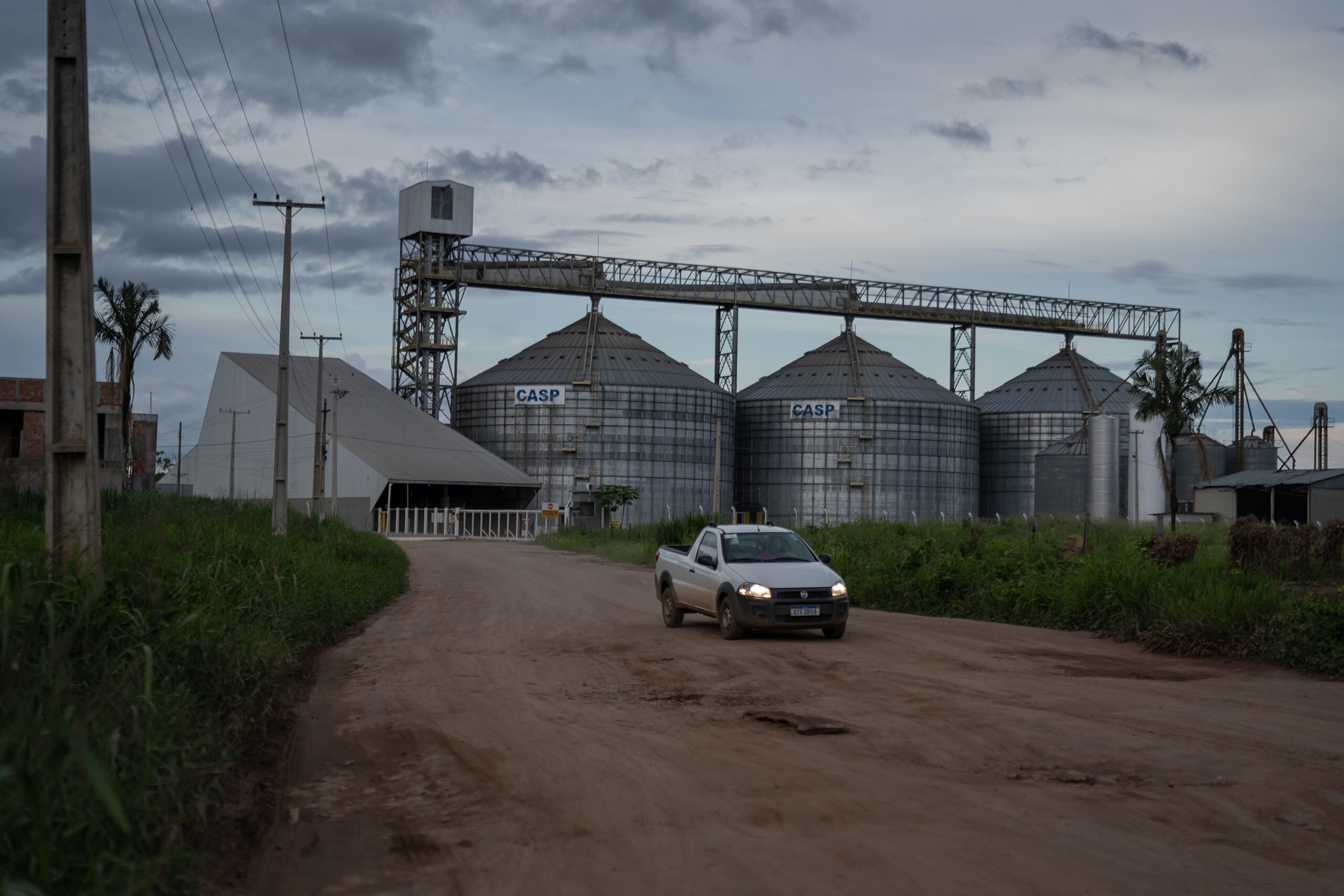
According to its LinkedIn page, the group owns more than 100,000 hectares of land across Rondônia and Mato Grosso.
Juca Masutti is president of Rondônia’s branch of the Aprosoja (Association of Soy and Corn Producers) and in local media was named as a candidate to run for state governor in the 2018 elections. Instead, he decided to back Jair Bolsonaro’s candidate Coronel Marcos Rocha.
Vilhena ranks amid the top cities of the state in terms of HDI and GDP per capita. As well as Masutti, other Brazil agribusiness giants, including Amaggi, operate there.
But for Adilson Alves, who lives on Vilhena’s Águas Claras agrarian reform settlement with another 150 small farming families, soy has brought little progress. Today, he complains that the settlement is suffocated by soy production in the surrounding region.
We have a soy farm right next to us…this increased the land value, but also made it more difficult for us to produce because of the pesticides. And with the increase in land prices, some people sold their land illegally
Adilson Alves, small producer from Águas Claras settlement, in Vilhena (RO).
Despite the relative prosperity, the region’s reputation for land conflict violence continues. Since 2015, according to Brazilan rural violence watchdog the Pastoral Land Commission, at least eight rural workers have been killed in two separate land conflict-related massacres in the region.
“In the south of Rondônia they call it Mato Grosso-isation: the installation of monocultures and the expulsion of small producers,” said the geographer Ricardo Gilson da Costa Silva.
Humaitá pressure
Today in Humaitá, dozens of illegal gold mining dredging platforms operate on the Madeira River where vast barges pass carrying soy and other goods.
Meanwhile, a slaughterhouse opened in Humaitá last year, which can process up to 360 cattle per day. Humaitá has around 23,000 heads of cattle.
In a 2020 report, the Realidade district of Humaitá, some 100km from the city centre, was included on a list compiled by Brazil’s Federal Prosecutor’s Office Amazon Task Force of 10 “hotspot” regions that accounted for some 60% of deforestation in 2019.
Deforestation has risen in the region, on account of plans to repave the middle-section of the BR-319 highway, which would connect Porto Velho with Manaus.
“The paving of the BR-319 has an extremely relevant impact on deforestation in the south of Amazonas state today,” said Ana Carolina Bragança, coordinator of the task force.
With infrastructure, there must be safety guards to protect against deforestation such as the creation of conservation units, staff for these units, and sustainable development projects for the region
Ana Carolina Bragança, federal prosecutor and coordinator of the Amazon Task Force.
For Gilson da Costa Silva, land price increases in Rondônia – driven in part by soy production – have caused smaller producers to sell up and seek out new territories, of which Humaitá’s Realidade district is an attractive option.
“Those that can’t get land in Porto Velho will go to Realidade,” he said. “They’ll plant some crops for their own sustenance, but the main thing is cattle, and the main thing with cattle is deforestation.”
This article was produced in partnership with Diálogo Chino.


